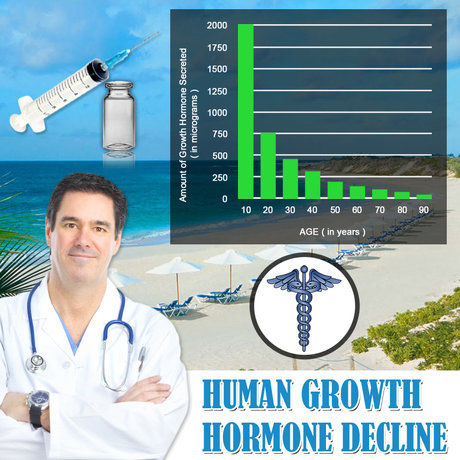Introduction
Urological health is a critical aspect of overall well-being, yet disparities in urological conditions among different ethnic groups of American males are often under-discussed. This article delves into the multivariate analysis of risk factors and outcomes associated with urological health disparities. By understanding these variations, healthcare providers can tailor interventions and improve outcomes for all ethnic groups.
Ethnic Variations in Urological Health
Urological health disparities among American males are influenced by a myriad of factors, including genetics, lifestyle, and socio-economic status. A comprehensive analysis reveals that African American males are at a higher risk of developing prostate cancer compared to their Caucasian counterparts. According to the American Cancer Society, African American men have a 1.7 times higher incidence rate of prostate cancer and a 2.3 times higher mortality rate than Caucasian men. This disparity is not solely attributable to genetic predispositions but also to differences in access to healthcare and screening practices.
In contrast, Hispanic American males tend to have lower rates of prostate cancer but face increased risks of other urological conditions such as kidney stones. Studies indicate that dietary habits, such as higher consumption of oxalate-rich foods, may contribute to this increased prevalence. Moreover, Asian American males exhibit lower rates of benign prostatic hyperplasia (BPH) compared to other ethnic groups, which may be linked to genetic factors and dietary differences.
Risk Factors and Their Impact
Several risk factors contribute to the disparities in urological health outcomes among American males. Age is a significant risk factor for conditions like BPH and prostate cancer, with the incidence increasing dramatically after the age of 50. However, the impact of age varies across ethnic groups. For instance, African American males tend to develop prostate cancer at a younger age than Caucasian males, necessitating earlier screening and intervention.
Lifestyle factors, such as diet and physical activity, also play a crucial role. Diets high in red meat and low in fruits and vegetables have been linked to an increased risk of prostate cancer. Conversely, a diet rich in omega-3 fatty acids, found in fish, may offer protective effects. Physical activity levels also vary across ethnic groups, with some studies suggesting that African American and Hispanic American males are less likely to engage in regular exercise, which can exacerbate urological health issues.
Socio-Economic and Access to Care
Socio-economic status and access to healthcare are pivotal in understanding urological health disparities. African American and Hispanic American males often face barriers to healthcare access, including lack of insurance and limited availability of urological specialists in their communities. These barriers can lead to delayed diagnosis and treatment, resulting in poorer outcomes.
Moreover, cultural attitudes towards healthcare can influence outcomes. For example, Asian American males may be less likely to seek medical attention for urological symptoms due to cultural stigma or language barriers. Addressing these socio-economic and cultural factors is essential for reducing disparities and improving overall urological health.
Outcomes and Interventions
The outcomes of urological conditions vary significantly across ethnic groups, influenced by the interplay of risk factors and access to care. Prostate cancer survival rates, for instance, are lower among African American males, partly due to later-stage diagnoses and less aggressive treatment regimens. Conversely, Caucasian males often have better outcomes due to earlier detection and more comprehensive treatment options.
Interventions aimed at reducing these disparities must be multifaceted. Increasing access to screening and early detection programs, particularly in underserved communities, can help bridge the gap. Additionally, culturally sensitive educational campaigns can raise awareness and encourage early intervention. Tailoring dietary and lifestyle recommendations to the specific needs and cultural practices of different ethnic groups can also mitigate risk factors.
Conclusion
Urological health disparities among American males are a complex issue influenced by genetic, lifestyle, and socio-economic factors. By conducting a multivariate analysis of these risk factors and outcomes, healthcare providers can better understand the unique challenges faced by different ethnic groups. Implementing targeted interventions can improve urological health outcomes and reduce disparities, ultimately enhancing the well-being of all American males.
Contact Us For A Fast And Professional Response

- Urological Health and Sexual Wellness: A Comprehensive Guide for American Men [Last Updated On: March 8th, 2025] [Originally Added On: March 8th, 2025]
- Hydration's Vital Role in Urological Health for American Males [Last Updated On: March 18th, 2025] [Originally Added On: March 18th, 2025]
- Genetic Insights into Prostate Cancer, BPH, and Kidney Disease in American Men [Last Updated On: March 18th, 2025] [Originally Added On: March 18th, 2025]
- Managing Urological Pain: Causes, Diagnosis, and Treatment Strategies for Men [Last Updated On: March 18th, 2025] [Originally Added On: March 18th, 2025]
- Urological Infections in Men: Causes, Prevention, and Management Strategies [Last Updated On: March 18th, 2025] [Originally Added On: March 18th, 2025]
- Urological Health Strategies for American Men in the Workplace [Last Updated On: March 18th, 2025] [Originally Added On: March 18th, 2025]
- Heart and Urology: Interconnected Health in American Men [Last Updated On: March 19th, 2025] [Originally Added On: March 19th, 2025]
- Urological Health and Fertility: Conditions, Diagnosis, and Management for American Males [Last Updated On: March 19th, 2025] [Originally Added On: March 19th, 2025]
- Urological Innovations Enhancing Care for American Males: Trends and Advancements [Last Updated On: March 19th, 2025] [Originally Added On: March 19th, 2025]
- Exercise Routines to Enhance Urological Health in American Men [Last Updated On: March 19th, 2025] [Originally Added On: March 19th, 2025]
- Smoking's Detrimental Effects on Urological Health in American Men [Last Updated On: March 20th, 2025] [Originally Added On: March 20th, 2025]
- Urological Health Guide for American Men: Symptoms, Detection, and Management [Last Updated On: March 21st, 2025] [Originally Added On: March 21st, 2025]
- Urological Health Essentials for American Males: Screenings, Lifestyle, and Education [Last Updated On: March 21st, 2025] [Originally Added On: March 21st, 2025]
- Urological Health Essentials for American Male Athletes: Risks, Prevention, and Care [Last Updated On: March 22nd, 2025] [Originally Added On: March 22nd, 2025]
- Understanding Urological Insurance Coverage: A Guide for Men [Last Updated On: March 22nd, 2025] [Originally Added On: March 22nd, 2025]
- Debunking Urological Myths: Facts on Prostate Cancer, Urination, and Erectile Dysfunction [Last Updated On: March 23rd, 2025] [Originally Added On: March 23rd, 2025]
- Specialized Urological Care and Services for American Veterans [Last Updated On: March 23rd, 2025] [Originally Added On: March 23rd, 2025]
- Urological Health's Psychological Impact on American Men: Addressing Stigma and Support [Last Updated On: March 23rd, 2025] [Originally Added On: March 23rd, 2025]
- Urological Health in Aging Men: Screening, Lifestyle, and Advances in Treatment [Last Updated On: March 23rd, 2025] [Originally Added On: March 23rd, 2025]
- Stress and Urological Health in American Males: Impacts and Management Strategies [Last Updated On: March 23rd, 2025] [Originally Added On: March 23rd, 2025]
- Dietary Strategies for Enhancing Urological Health in American Men [Last Updated On: March 23rd, 2025] [Originally Added On: March 23rd, 2025]
- Supplements and Urological Health: A Guide for American Men [Last Updated On: March 23rd, 2025] [Originally Added On: March 23rd, 2025]
- Obesity's Impact on Urological Health in American Men: Risks and Mitigation Strategies [Last Updated On: March 24th, 2025] [Originally Added On: March 24th, 2025]
- Urological Health in Young American Males: Importance of Early Detection and Screening [Last Updated On: March 24th, 2025] [Originally Added On: March 24th, 2025]
- Urological Surgery Recovery Guide for American Males: Tips and Strategies [Last Updated On: March 24th, 2025] [Originally Added On: March 24th, 2025]
- Urological Health and Cancer: Risks, Prevention, and Early Detection in American Males [Last Updated On: March 24th, 2025] [Originally Added On: March 24th, 2025]
- Urological Health's Impact on Mental Well-being in American Men: A Holistic Approach [Last Updated On: March 25th, 2025] [Originally Added On: March 25th, 2025]
- Urological Health: Essential Preventive Care for American Men's Well-being [Last Updated On: March 25th, 2025] [Originally Added On: March 25th, 2025]
- Urological Health in American Men: Conditions, Prevention, and Holistic Care [Last Updated On: March 25th, 2025] [Originally Added On: March 25th, 2025]
- Urological Health: Key to Fertility and Family Planning for American Males [Last Updated On: March 25th, 2025] [Originally Added On: March 25th, 2025]
- Environmental Factors Impacting Urological Health in American Males: Risks and Prevention [Last Updated On: March 25th, 2025] [Originally Added On: March 25th, 2025]
- Urological Health and Sleep Quality: A Vital Connection for American Men [Last Updated On: March 25th, 2025] [Originally Added On: March 25th, 2025]
- Managing Urological Health: Essential Travel Tips for American Men [Last Updated On: March 26th, 2025] [Originally Added On: March 26th, 2025]
- Urological Health Guide: Procedures, Diagnosis, and Care for American Males [Last Updated On: March 26th, 2025] [Originally Added On: March 26th, 2025]
- Urological Rehabilitation: Enhancing Urinary, Sexual, and Prostate Health for American Men [Last Updated On: March 26th, 2025] [Originally Added On: March 26th, 2025]
- Empowering Men: Integrating Urology into Sexual Health Education in the U.S. [Last Updated On: March 26th, 2025] [Originally Added On: March 26th, 2025]
- Urological Health and Immunity: Strategies for American Males [Last Updated On: March 26th, 2025] [Originally Added On: March 26th, 2025]
- Urological Health: Key to Longevity for American Men [Last Updated On: March 26th, 2025] [Originally Added On: March 26th, 2025]
- Technological Advances in Urological Diagnosis for American Males: Imaging, Minimally Invasive Procedures, and Beyond [Last Updated On: March 26th, 2025] [Originally Added On: March 26th, 2025]
- Exercise Benefits and Safe Practices for Urological Health in American Males [Last Updated On: March 26th, 2025] [Originally Added On: March 26th, 2025]
- Medications' Impact on Urological Health in American Men: A Comprehensive Overview [Last Updated On: March 26th, 2025] [Originally Added On: March 26th, 2025]
- Optimizing Urological Health: Best Practices for American Males [Last Updated On: March 27th, 2025] [Originally Added On: March 27th, 2025]
- Urological Health's Impact on American Men's Social Life and Well-being [Last Updated On: March 27th, 2025] [Originally Added On: March 27th, 2025]
- Alcohol's Impact on Urological Health: Risks and Strategies for American Men [Last Updated On: March 27th, 2025] [Originally Added On: March 27th, 2025]
- Integrating Urological Health into U.S. Men's Health Campaigns: A Vital Step Forward [Last Updated On: March 27th, 2025] [Originally Added On: March 27th, 2025]
- Urological Health and Vision: Exploring Connections and Impacts in American Men [Last Updated On: March 27th, 2025] [Originally Added On: March 27th, 2025]
- Managing Urological Health in American Men with Chronic Illnesses: Strategies and Insights [Last Updated On: March 28th, 2025] [Originally Added On: March 28th, 2025]
- Urological and Bone Health Link: Essential Insights for American Males [Last Updated On: March 28th, 2025] [Originally Added On: March 28th, 2025]
- Urological Health Impact and Management Strategies for American Men [Last Updated On: March 28th, 2025] [Originally Added On: March 28th, 2025]
- Urological Health's Impact on Mental Well-being in American Men: Awareness and Management [Last Updated On: March 28th, 2025] [Originally Added On: March 28th, 2025]
- Urological Health and Skin Care: A Vital Connection for American Males [Last Updated On: March 29th, 2025] [Originally Added On: March 29th, 2025]
- Urological Health and Hearing Loss: Vascular, Hormonal, and Inflammatory Links in American Males [Last Updated On: March 30th, 2025] [Originally Added On: March 30th, 2025]
- Urological Health: Vital for Men's Well-being and Advocacy in the U.S. [Last Updated On: April 2nd, 2025] [Originally Added On: April 2nd, 2025]
- Urological Health in American Men: Research, Impact, and Future Directions [Last Updated On: April 4th, 2025] [Originally Added On: April 4th, 2025]
- Urological Health Linked to Dental Care: Implications for American Men's Well-being [Last Updated On: April 5th, 2025] [Originally Added On: April 5th, 2025]
- Urological and Respiratory Health Link in American Males: Importance and Impact [Last Updated On: April 5th, 2025] [Originally Added On: April 5th, 2025]
- Urological and Digestive Health: Interconnected Systems and Holistic Care for American Males [Last Updated On: April 6th, 2025] [Originally Added On: April 6th, 2025]
- Urological Health's Impact on American Men's Careers: Management Strategies [Last Updated On: April 7th, 2025] [Originally Added On: April 7th, 2025]
- Urological and Endocrine Health: A Vital Connection for American Males [Last Updated On: April 7th, 2025] [Originally Added On: April 7th, 2025]
- Urological Health in U.S. Men's Policy: Need for Focus and Reform [Last Updated On: April 8th, 2025] [Originally Added On: April 8th, 2025]
- Urological Health: Breaking Stigma, Enhancing Men's Well-being in America [Last Updated On: April 10th, 2025] [Originally Added On: April 10th, 2025]
- Urological and Musculoskeletal Health: A Holistic Guide for American Men [Last Updated On: April 10th, 2025] [Originally Added On: April 10th, 2025]
- Urological and Cardiovascular Health: Critical Links and Management for American Males [Last Updated On: April 12th, 2025] [Originally Added On: April 12th, 2025]
- Urological Health in American Males: The Critical Neurological Connection [Last Updated On: April 12th, 2025] [Originally Added On: April 12th, 2025]
- Urological Health in American Men: Conditions, Screenings, and Lifestyle Impact [Last Updated On: April 12th, 2025] [Originally Added On: April 12th, 2025]
- Urological Health Integration in U.S. Men's Programs: Importance and Impact [Last Updated On: April 12th, 2025] [Originally Added On: April 12th, 2025]
- Urological Health's Impact on American Men's Family Life and Well-being [Last Updated On: April 13th, 2025] [Originally Added On: April 13th, 2025]
- Urological and Reproductive Health: Essential Connections and Care for American Men [Last Updated On: April 14th, 2025] [Originally Added On: April 14th, 2025]
- Enhancing Men's Health: The Critical Role of Urological Care in the U.S. [Last Updated On: April 15th, 2025] [Originally Added On: April 15th, 2025]
- Urological Health: Vital for Men's Well-being and Advocacy in the U.S. [Last Updated On: April 15th, 2025] [Originally Added On: April 15th, 2025]
- Urological Health Essentials for American Males: Prevention and Care Strategies [Last Updated On: April 16th, 2025] [Originally Added On: April 16th, 2025]
- Urological Health's Impact on American Men's Community Involvement and Proactive Care [Last Updated On: April 16th, 2025] [Originally Added On: April 16th, 2025]
- Urological Health and Emotional Well-being in American Men: A Holistic Approach [Last Updated On: April 16th, 2025] [Originally Added On: April 16th, 2025]
- Urological Health's Impact on American Men's Social Well-being: Insights and Strategies [Last Updated On: April 16th, 2025] [Originally Added On: April 16th, 2025]
- Urological Health and Immune Function: A Vital Connection for American Males [Last Updated On: April 17th, 2025] [Originally Added On: April 17th, 2025]
- Enhancing Men's Health: Integrating Urological Education into American Programs [Last Updated On: April 18th, 2025] [Originally Added On: April 18th, 2025]
- Urological Health and Mental Well-being: A Holistic Approach for American Males [Last Updated On: April 18th, 2025] [Originally Added On: April 18th, 2025]
- Urological Health Crucial for American Males' Well-being and Quality of Life [Last Updated On: April 20th, 2025] [Originally Added On: April 20th, 2025]
- Urological Health's Impact on American Men's Life Quality: Insights and Strategies [Last Updated On: April 21st, 2025] [Originally Added On: April 21st, 2025]
- Prostate Cancer in American Males: Understanding, Detection, and Advanced Treatments [Last Updated On: April 21st, 2025] [Originally Added On: April 21st, 2025]
















